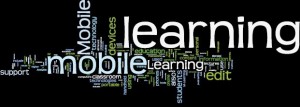 Date: 23 May 2012
Date: 23 May 2012
Time: 13.00-14.00
Place: NJ14 3-228 (Las Vegas)
Between 2007 and 2009 around 60.000 immigrants were coming to Denmark each year (Grunnet 2010). The main integration activities for these new citizens are language courses run by the communities, which are offered free of charge or with a minimal fee. The goal of these courses is to put the new comers into a position, where they can participate in everyday Danish life. But although the courses establish a thorough theoretical understanding of the language, they often lack the possibilities to motivate the students in their everyday activities to apply this knowledge in real cultural settings and thus to pro-actively participate in their host society.
To cope with this applicability problem, we suggest an approach based on our previous work on intercultural communication (e.g. Rehm et al. 2009) that puts the cultural and language learning task in the context of its actual use by embracing new and innovative training methods – like situated and experience-based learning – that have been shown to be more effective in terms of cultural integration (Landis et al 2004). Imagine e.g. a situation where the student stands in line at the train station in order to purchase a ticket. This can be seen as an ideal situation to trigger a Danish learning session on buying a train ticket. The student has some time for this session as he is waiting for his turn, he is in the right context for the knowledge that is conveyed and he is able to apply the knowledge shortly afterwards in a real situation.
The talk will be about presenting the idea and approach on how to incorporate a system/application, which will support this claim about how context based learning can be more effective in cultural integration. I hope to gain some insight from many of the “immigrants” that currently inhabit here on the department.
Bio
Søren Eskildsen graduated as M.Sc. from Medialogy in the summer 2011 at AAU Aalborg. With main focus on creating virtual environments with the purpose of investigating learning possibilities by using a more vivid approach to creating learning material. This idea has paved the way to Namibia to work on preserving indigenous knowledge for duration of 3½ weeks. His master thesis focused on learning from a virtual environment and measuring different activities like preferred media. He is currently employed as a Research assistant at Medialogy Aalborg, where the current project regarding cultural support in a learning context is being investigated. In addition he teaches Animation and Graphic Design on first semester as well as supervising on several semesters (2nd & 6th).